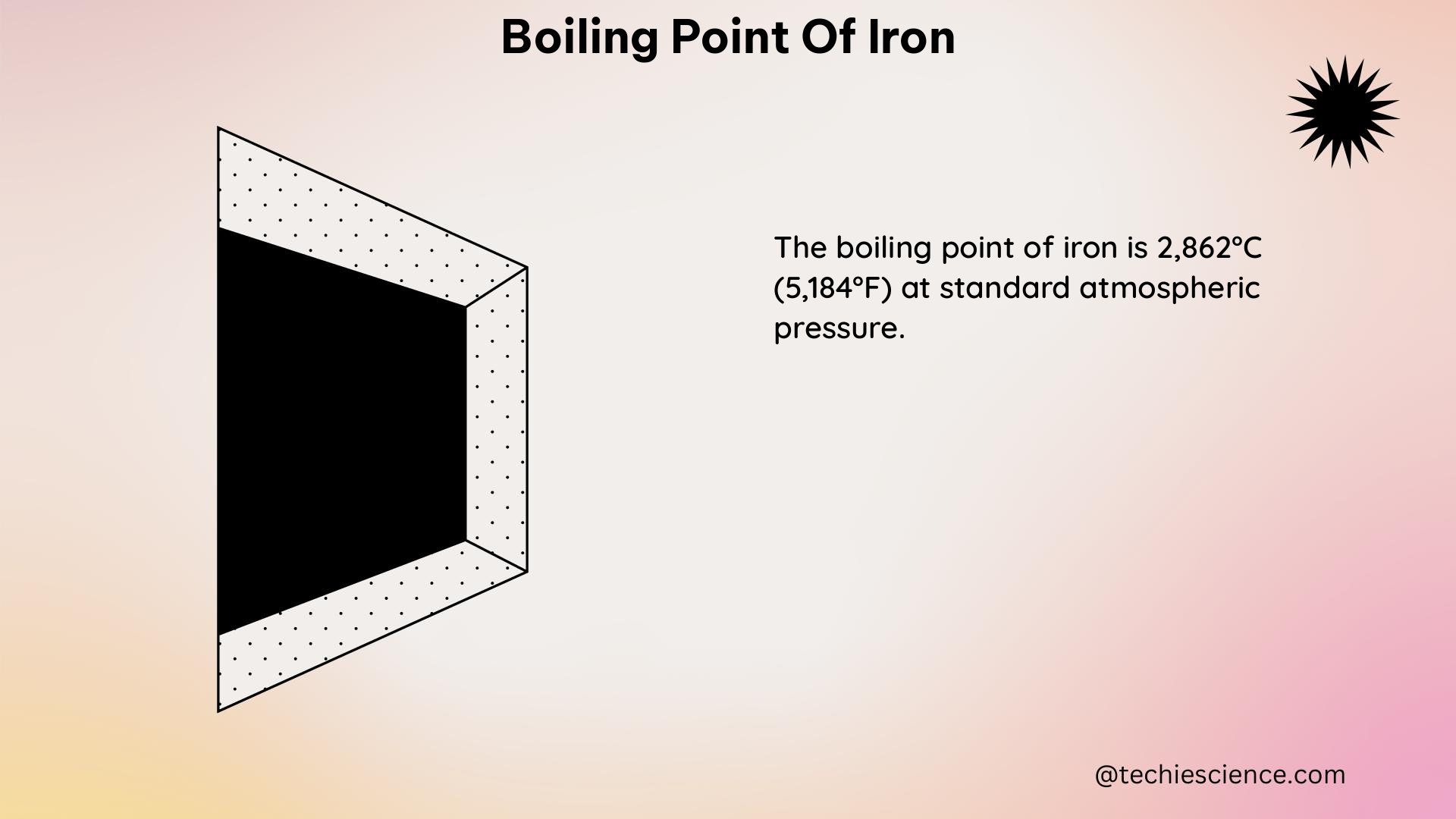The boiling point of iron is a critical physical property that plays a crucial role in various industrial and laboratory applications. At standard atmospheric pressure (1 atm), the boiling point of iron is typically reported as 2,862°C (5,184°F). This value is based on extensive thermodynamic data and is widely accepted in the scientific community.
Understanding the Boiling Point of Iron
The boiling point of a substance is the temperature at which its vapor pressure equals the surrounding atmospheric pressure. This occurs when the kinetic energy of the molecules in the liquid phase is sufficient to overcome the intermolecular forces, allowing them to escape the liquid and enter the gaseous phase.
For iron, the boiling point is influenced by several factors, including:
-
Atmospheric Pressure: The boiling point of iron is directly related to the atmospheric pressure. As the pressure increases, the boiling point also increases, and vice versa.
-
Presence of Impurities: The addition of impurities, such as dissolved substances, can alter the boiling point of iron. The presence of these impurities can either raise or lower the boiling point, depending on their nature and concentration.
-
Experimental Conditions: The specific experimental setup and conditions, such as the type of container, heating method, and measurement techniques, can also affect the observed boiling point of iron.
Theoretical Considerations

The boiling point of iron can be calculated using the Clausius-Clapeyron equation, which relates the vapor pressure of a substance to its temperature:
ln(P2/P1) = (ΔHvap/R) * (1/T1 - 1/T2)
Where:
– P1 and P2 are the vapor pressures at temperatures T1 and T2, respectively
– ΔHvap is the enthalpy of vaporization of the substance
– R is the universal gas constant
By rearranging the equation and using the known vapor pressure of iron at a specific temperature, the boiling point can be determined.
Experimental Determination of the Boiling Point of Iron
To measure the boiling point of iron experimentally, you can follow these steps:
- Prepare an iron sample, such as a small piece of iron wire or iron powder.
- Place the sample in a heat-resistant container, such as a crucible.
- Set up the apparatus with a heat source (e.g., Bunsen burner) and a thermometer capable of measuring high temperatures (e.g., a pyrometer).
- Slowly heat the iron sample while continuously monitoring the temperature.
- As the temperature approaches the boiling point, you may observe the iron beginning to emit vapor.
- Continue heating the iron until the vapor pressure equals the atmospheric pressure, at which point the iron will start to boil.
- Record the temperature at which the iron begins to boil. This is the boiling point of iron under the experimental conditions.
It is important to note that the measured boiling point may differ slightly from the commonly reported value of 2,862°C (5,184°F) due to factors such as experimental errors, impurities in the sample, or variations in atmospheric pressure.
Applications of the Boiling Point of Iron
The boiling point of iron is a crucial parameter in various industrial and scientific applications, including:
-
Metallurgy: The boiling point of iron is essential in the design and operation of metal smelting and refining processes, as it determines the temperature at which iron can be vaporized and separated from other components.
-
Materials Science: The boiling point of iron is a fundamental property that influences the behavior of iron-based materials, such as the formation of iron oxides and the design of high-temperature alloys.
-
Chemical Analysis: The boiling point of iron is often used in analytical techniques, such as atomic absorption spectroscopy, where iron samples are dissolved in acids and the resulting solutions are analyzed.
-
Astrophysics: The boiling point of iron is relevant in the study of stellar evolution and the formation of iron-rich celestial bodies, such as neutron stars and black holes.
Conclusion
The boiling point of iron is a well-defined physical property that is crucial in various industrial and scientific applications. By understanding the factors that influence the boiling point, researchers and engineers can optimize processes, design materials, and conduct accurate analyses involving iron. The experimental determination of the boiling point of iron can be a valuable hands-on exercise for science students, providing them with practical insights into the behavior of this important element.
References:
- Exp.7 Quantitative Analysis of Iron.pdf – Name: Maha Ahmed Section
- Quantification of Iron in Total Cereal: Accuracy of Nutrition
- A quantitative analysis of the ignition characteristics of fine iron particles
- Rapid Method for Quantification of Iron (Fe+3) from Ferrazone (NaFe …)
- General College Chemistry Lab Manual (Semester 2)

The lambdageeks.com Core SME Team is a group of experienced subject matter experts from diverse scientific and technical fields including Physics, Chemistry, Technology,Electronics & Electrical Engineering, Automotive, Mechanical Engineering. Our team collaborates to create high-quality, well-researched articles on a wide range of science and technology topics for the lambdageeks.com website.
All Our Senior SME are having more than 7 Years of experience in the respective fields . They are either Working Industry Professionals or assocaited With different Universities. Refer Our Authors Page to get to know About our Core SMEs.